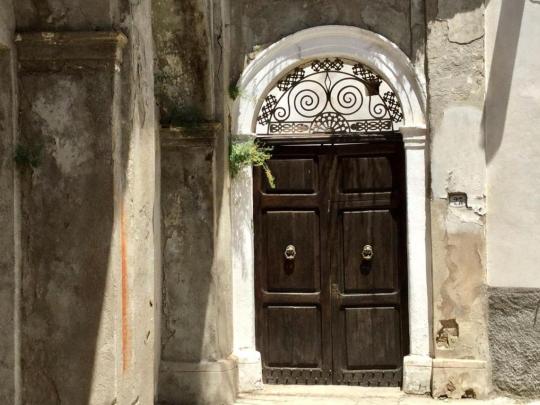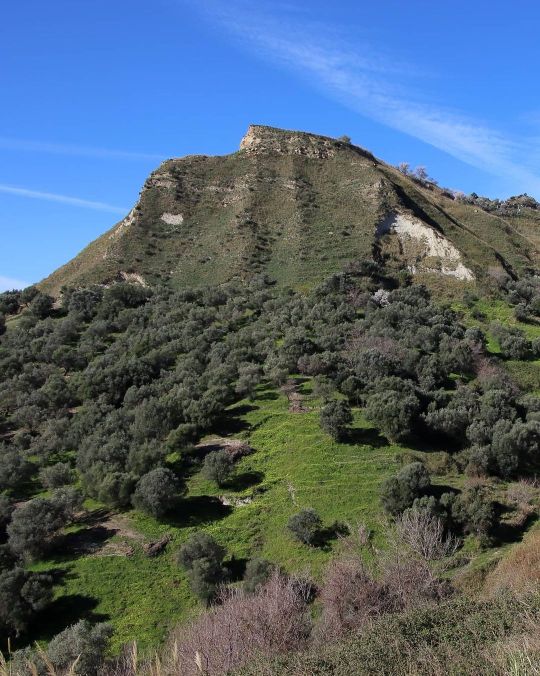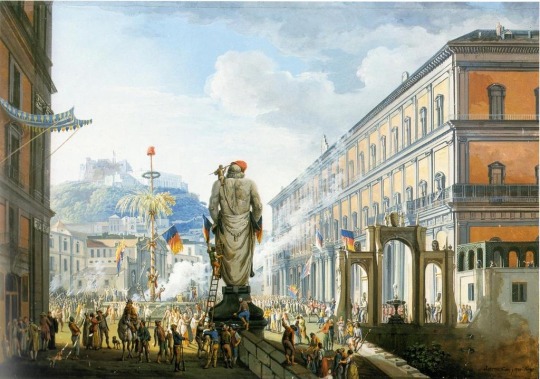#Strongoli
Text










Strongoli, Calabria, Italy
Photos by Albergo Diffuso | Borgo Petelia
Follow us on Instagram, @calabria_mediterranea
#strongoli#calabria#italy#italia#south italy#southern italy#italian#mediterranean#europe#landscape#italian landscape#landscapes#italian landscapes
41 notes
·
View notes
Text

Streetart: Dionisio by Andrea Casciu @ Strongoli, Italy, for La Pizzuta Del Principe
More pics at:
https://barbarapicci.com/2023/08/30/streetart-andrea-casciu-strongoli-italy/
3 notes
·
View notes
Text
Riviera di Chiaia: gioiello nel cuore di Napoli
La Riviera di Chiaia, cuore pulsante del quartiere omonimo, è una delle strade più celebri e caratteristiche di Napoli. Con i suoi palazzi nobiliari, le boutique di lusso, i caffè storici e la vista mozzafiato sul Golfo, rappresenta un connubio perfetto tra storia, eleganza e vita mondana.
Un po' di storia
Il nome "Chiaia" deriva dal catalano "platja", che significa "spiaggia", e risale al periodo della dominazione aragonese. Originariamente, infatti, la zona era occupata da una spiaggia sabbiosa. La strada fu aperta ufficialmente nel 1697, ma subì numerosi cambiamenti nel corso dei secoli.
Un percorso tra arte e storia
Passeggiando lungo la Riviera di Chiaia, si ha l'impressione di fare un viaggio nel tempo. I palazzi nobiliari che si affacciano sulla strada, come Palazzo Pignatelli Strongoli e Palazzo San Teodoro, sono veri e propri scrigni d'arte, che custodiscono affreschi, stucchi e decorazioni preziose. Molti di questi edifici sono stati trasformati in lussuosi hotel, ristoranti o sedi di prestigiose istituzioni culturali.
La Riviera di Chiaia oggi
Oggi, la Riviera di Chiaia è una delle zone più esclusive di Napoli. Le boutique di moda, le gioiellerie e le gallerie d'arte si alternano a caffè storici e ristoranti raffinati, creando un'atmosfera elegante e sofisticata. La strada è particolarmente animata durante le ore serali, quando i napoletani e i turisti si ritrovano per un aperitivo o per una cena romantica.
La Villa Comunale
A pochi passi dalla Riviera di Chiaia si trova la Villa Comunale, un ampio parco pubblico che si affaccia sul mare. La villa, realizzata nel XIX secolo, è un luogo ideale per rilassarsi e godere della bellezza del Golfo di Napoli. Al suo interno si trovano giardini all'inglese, fontane, statue e un laghetto.
Un luogo da scoprire
La Riviera di Chiaia è molto più di una semplice strada: è un luogo ricco di storia, arte e cultura, che racchiude in sé l'anima di Napoli. Sia che siate appassionati d'arte, amanti dello shopping o semplicemente alla ricerca di un luogo dove rilassarvi, la Riviera di Chiaia saprà sicuramente conquistarvi.
Immagine di copertina: DepositPhotos
Read the full article
0 notes
Text
Só amor
Amor. Não só meu. Nosso. E que bom que é, ao fim de 12 anos, saber que és o amor que enche a minha vida, mas também da nossa filha. Amor, ainda te lembras como tudo começou?

Eu sim. Todos os anos faço este exercício de regresso ao passado. Tento contar, na minha cabeça, quantas memórias construímos juntos. Sorrio ao escrever-te porque nos meus olhos passam imagens vívidas de tanta coisa boa. As noites passadas em claro a descobrir-te. Os beijos que não saciavam a vontade de te ter sempre ao meu lado. Os planos que fazíamos a medo. As primeiras vezes. A coragem de assumir que só nos queríamos um ao outro (e durámos muito para lá do Natal, lembras-te?). Arriscar. Cair. Levantar. Os nossos outubros.
Sinto que quando te escrevo, escrevo também para o fruto do nosso amor. Um dia, ela será capaz de ler cada carta e vai encher-nos de perguntas. Vamos falar de sítios que já não existem. De pessoas que já partiram. Vamos demorar uma eternidade a contar como aquele jantar se prolongou, como uma foto deu origem a um beijo. Vamos falar das sandes de presunto e ela não vai perceber porque 'a mamã nem gosta de presunto'. Vamos recordar o 06X17 e ela vai perguntar 'porque é que o papá tem uma máscara na cabeça?' Vamos rir dos vídeos das férias (especialmente o incidente de Veneza) e ela vai rir connosco e ficar sem perceber o que são os 'strongolis'. E, acima de tudo, vai ouvir-nos contar como ela trouxe mais amor ao nosso amor. Como ela fez valer a pena todas as lágrimas. Como ela nos fez ficar.
Sei que em 12 anos nem tudo foi perfeito. Mas há sempre amor. Amo-te todos os dias. Às vezes mais. Outras menos. Às vezes com fervor.
Outras sem paciência. Às vezes distante, cansada. Às vezes carente. Mas é sempre amor. Continuamos a dormir lado a lado, em paz, certos deste amor. Se tiveres dúvidas, quero que saibas que se durmo tão bem (e rápido e sonoramente, dizes!) é porque nunca questionei, nestes 12 anos, ao adormecer, 'o que estou aqui a fazer?'. Porque eu sei; estou aqui porque é amor.
0 notes
Text
Streetart – Andrea Casciu @ Strongoli, Italy
Andrea Casciu @ Strongoli, Italy Andrea Casciu @ Strongoli, Italy Andrea Casciu @ Strongoli, Italy Andrea Casciu @ Strongoli, Italy Title: Dionisio …Streetart – Andrea Casciu @ Strongoli, Italy

View On WordPress
0 notes
Text
Il Segreto per Dominare l'Industria: Come Scegliere il Giusto PLC Siemens per il Tuo Progetto

Il Segreto per Dominare l'Industria: Come Scegliere il Giusto PLC Siemens per il Tuo Progetto
Ciao! Sono Alessandro Strongoli, il tuo formatore di fiducia su tutto ciò che riguarda la programmazione PLC Siemens e l'automazione industriale. In un mondo in cui l'automazione è la chiave per un'efficienza industriale senza precedenti, la scelta del giusto PLC (Programmable
[...] Clicca Ora e Leggi di Più >>>
#programmazione #plc #siemens
Read the full article
0 notes
Text
In Radio con me - Intervista a Salvatore De Siena - Il Parto delle Nuvole Pesanti 10-09-2022
#calabria#catona#desiena#ilparto#ilpartodellenuvolepesanti#inradioconme#intervista#locride#nicolaprocopio#nuvolepesanti#partodellenuvolepesanti#podcast#radio#radioroccella#reggiocalabria#reggiofest2022#roccellaionica#rubrica#salvatoredesiena#strongoli
0 notes
Photo


Diario fotografico #69 Strongoli.
1 note
·
View note
Photo

PASTA PARADISE The 2 #pastas in this photo are 2 of the best in the world. One is handmade #gnocchi with porcini. The other #pasta is handmade #strongoli (thick egg spaghetti) served with veal mince and 18 local organic #herbs You can only enjoy this culinary experience at Il Mandrone in San Pietro, #Abruzzo which is the final destination of my Italy Unexplored Tour Abruzzo. (at San Pietro, Abruzzi, Italy)
1 note
·
View note
Text










Strongoli, Calabria, Italy
Photos by Corriere della Sera and Albergo Diffuso | Borgo Petelia
Follow us on Instagram, @calabria_mediterranea
#strongoli#calabria#italy#italia#south italy#southern italy#mediterranean#italian#italian landscape#landscape#landscapes#sea#mediterranean sea#beach#vineyard#vineyards#europe#countryside#beaches
43 notes
·
View notes
Photo

Canon EOS 250D | 19mm | 1/250s | f/10 | ISO 100 Taken on 25/02/2020. Charming resorts along two gorgeous coastlines, rustic mountain villages and peperoncino-heavy cuisine make the southern region of Calabria a favourite below-the-radar Italian holiday destination. Historically underdeveloped and neglected, Calabria is now trying to lure tourists to its quiet rural towns and villages of historical heritage – Rocca Imperiale, Tropea, Morano Calabro – and entice adventurous travellers seeking another side of Italy by promoting its unique, scenic hiking trail from the Ionian Sea to the Tyrrhenian Sea. If you haven't ventured further south than Rome, you're missing out on soaking up over a thousand years worth of history and culture in the Calabria region as it was part of Magna Graecia. And somewhat isolated hill towns like Strongoli, surrounded by unique scenery, preserve tradition, authenticity, architecture and hidden treasures as well as countless gastronomic delicacies. 𝗛𝗼𝘄 𝘁𝗼 𝗴𝗲𝘁 𝘁𝗵𝗲𝗿𝗲: You can arrive at Strongoli by bus from Crotone, Monday to Saturday. Look up the latest timetables on the 'Autolinee Romano' website. ______________________________________ #Strongoli #IgersCrotone #Ig_Crotone #Calabria #TurisCalabria #SouthItaly #AMePiaceIlSud #Italia #Italy #BeautifulPlaces #LandscapePhotography #Jaw_Dropping_Shots #Awesome_EarthPix #OurPlanetDaily #NatGeoItalia #NatGeoTravel #Calabria_BestPhoto #CalabriaMia #VolgoCalabria #IgersCalabria #Italian_Trips #WorldTravelPics #Amazingshots_Europa #Ig_Europe #ItaliaInFoto #ItalyInspired #Divine_DolceVita #Calabria_Love #TravelGreen #TravelItaly (at Strongoli) https://www.instagram.com/p/CHL1L1ilvJg/?igshid=1ni6ok8xt9pr1
#strongoli#igerscrotone#ig_crotone#calabria#turiscalabria#southitaly#amepiaceilsud#italia#italy#beautifulplaces#landscapephotography#jaw_dropping_shots#awesome_earthpix#ourplanetdaily#natgeoitalia#natgeotravel#calabria_bestphoto#calabriamia#volgocalabria#igerscalabria#italian_trips#worldtravelpics#amazingshots_europa#ig_europe#italiainfoto#italyinspired#divine_dolcevita#calabria_love#travelgreen#travelitaly
0 notes
Text
Calabria. “Sei un uomo morto”, scrivono a giornalista di Strongoli
Calabria. “Sei un uomo morto”, scrivono a giornalista di Strongoli

da ilcrotonese.it Giuseppe Le Rose ha scritto aricoli sulle proteste per l’apertura di una discarica. “Finirai in una discarica tu e il tuo comitato” si legge in una lettera anonima Il 19 settembre a Strongoli (Crotone) il giornalista Giovanni Le Rose, collaboratore del giornale online Il Crotonese, che pubblica notizie su Crotone e i comuni della provincia, ha trovato nella cassetta della posta…
View On WordPress
#libertà di stampa#notizie#informazione#Ambiente#libertà d&039;espressione#ecologia#Calabria#Libertà di Informazione#Centrale#crotone#Minacce#Discarica#lettera minatoria#Strongoli#Giuseppe Le Rose#Il crotonese#Le Rose#Ossigeno per l&039;Informazione#ossigenoinfo
0 notes
Text

La distruzione dell'albero della libertà a Largo di Palazzo by Severio della Gatta, 1800
“The destruction of the liberty tree in the Largo di Palazzo”, painted by Gatta in 1800, depicts the tree that was torn down by the Sanfedisti in 1799 after the fall of the Parthenopean Republic in Naples. The Sanfedisti were a counterrevolutionary peasant group created by cardinal Fabrizio Ruffo. The French had invaded Italy, and after King Ferdinand and his court fled Naples to Palermo, prince Francesco Pignatelli Strongoli took power but eventually surrendered to the French general Championnet. Republican sentiment had been brewing in Naples since the 1760s, and civil war broke out between the Republicans under general Championnet and the royalist lazzaroni (the lowest class of people in Naples). The Republicans conquered the fortress of Castel Sant’Elmo on January 20th and Naples became a republic on January 23rd. Ruffo was chosen by the king on January 25th (Ruffo had also fled to Palermo with the court) to rouse up a counterrevolution in the mainland. He landed in Calabria on February 7th and spent a month rallying an army of 17000 men, mostly peasants. By the end of April, he conquered about all of Calabria and Basilicata and most of Apulia, and in June began a siege of Naples. The Sanfedisti also had the support of the British Royal Navy under Admiral Nelson (he even earned a title for his support). On June 19, the republic fell.
Source: Robertson, John. “Enlightenment and Revolution: Naples 1799.” Transactions of the Royal Historical Society, vol. 10, 2000, pp. 17–44. JSTOR, http://www.jstor.org/stable/3679371. Accessed 14 Sept, 2022.
#yeah southern Italian peasants were almost all extreme royalists yes it’s embarrassing#it’s important to note that ‘Naples’ in most contemporary sources refers to the kingdom of naples. so most of southern italy#napoli#frev#loui talks history
14 notes
·
View notes
Text
Helfert, “Joachim Murat”, Chapter 4, Part 4
The battle of Tolentino
In the last days of April, Bianchi occupied the region of Tolentino, which he examined in person in all directions without delay. He had about 11,000 men at his disposal, while the king faced him with 16,000 infantry and 2,000 horsemen; for the time being, the imperial commander could only think of putting himself in a state of defence, but he decided to hold out until the end. The king had chosen his day well: General Neipperg was only at the Metauro, at four days' march from Bianchi.
At the same time, Nugent was already in the Abruzzi, marching on Antrodoco on 1 May, which General Montigny "cautiously" evacuated with 1600 men, and from there on Aquila, where Major Patrizio with the Neapolitan garrison withdrew to the fortress; but when Nugent earnestly demanded surrender, this was also carried out and the garrison departed with "all military honours". General Manhès had moved from Naples to the Liris with 5000 men and appeared before Ceprano on 2 May. It was certainly desirable for him to find the place occupied by some Roman irregulars, who fired on his invading troops, but then took to their heels; for he could now show his strength, let storm and give rein to the cruelty of his soldiers; part of the little town went up in flames. But Manhès did nothing against Nugent.
On May 1st, Murat and Bianchi faced each other without doing anything, the day passed with mutual observation and reconnaissance.
Nothing happened on the morning of the 2nd either. It was not until noon that the king, seeing that his opponent was determined to stand his ground but not to challenge, gave signal to attack, and that his columns began to move. A cavalry charge, in which Stephan Széchényi, later to become the "Great Hungarian", distinguished himself brilliantly, helped to raise the confidence of the Austrians and shake that of the Neapolitans right at the beginning of the battle. But the fortunes of war fluctuated to and fro throughout the day. An imperial detachment of chasseurs, which had been delayed, was surrounded and captured by royal cavalry. The Neapolitans made progress in detail, ours had to abandon several points to the more numerous enemy, and full of the joy of victory, Joachim sent joyful messages to Naples in the evening. Nevertheless, his army suffered a heavy loss with the wounding of Gen. Lieut. d'Ambrosio.
During the night Joachim gathered reinforcements, especially the Pignatelli-Strongoli legion; he was now almost 25,000 strong. On the 3rd in the morning, dense fog covered the area; when it lifted, the king saw the line of the imperials in a firm position like yesterday, the right wing leaning against the Chienti, the left against a steep mountain, which the Neapolitans considered useless for any gun position: however, Bianchi had used the night to have two cannons and a howitzer disassembled into their parts, brought up and then reassembled and set up again with unspeakable difficulty.
The second day of battle once again opened in the Royalists' favour. FML Mohr conceded Arancia to the enemy who was advancing with superior numbers; a fierce bayonet fight won the Neapolitans the important point of Cassone. But a miscalculated attack by General d'Aquino on La Vedove, used to his advantage by Bianchi at the right moment, inflicted the first serious defeat on the enemy; likewise, an attack by the Maio brigade on the strong position at Vomaccio on the extreme right wing of the imperial forces failed completely. After this it had become noon, a lull occurred, and the battle was at rest for more than an hour. The king decided on a main attack on the hill of Madia on the left wing of the Austrians, which he thought was defended only by small arms. His columns advanced, and the first cartridge shot fell into their ranks, which began to waver in surprise. Now Bianchi ordered the advance. His men seemed to have waited for this sign and rushed to the attack, the phalanges of the dismayed Neapolitans were blown apart; soon the right wing of the royals was struck on the head and dispersed in disorderly flight.
At this fateful moment, the King receives two almost simultaneous bad messages: one from the Minister of War, Macdonald, about the appearance of the enemy on the Liris, the alarming mood in the capital and in several provinces, especially in Calabria; the other from General Montigny about the loss of Antrodoco and Aquila to Nugent. The king is beside himself, orders a court martial against Montigny and Major Patrizio, but this does not help the matter. While he is now thinking of withdrawing his troops from the battle, Bianchi gives him no time to rally. The king's generals lose courage, the men think only of their personal safety; the soldiers, who are not helped by their nimble legs, let themselves be caught in heaps. During the night, d'Aquino and Medici appear before the king with the report that their brigades have been attacked in the darkness, that they have lost many dead and prisoners, and that the rest are scattered; Pignatelli reports that not a single company of his guard is still in order; Livron declares that he can no longer stand for the mounted guard. Not only is the day decided, the campaign is lost, the empire, the throne. Bianchi writes: "The enemy will hardly be able to withstand us in the open field."....
The loss of the Austrians in dead, wounded and prisoners amounted to 27 officers and 795 men, that of the Neapolitans in dead and wounded alone about 1700. 4 adjutants of the king, 3 staff and 35 senior officers, 2219 men were taken prisoner; captured were horses, pieces of armour, 1 cannon, 6 ammunition trolleys, etc.
In a footnote the author mentions two more sources that might be of interest but which I could not find on the spot:
In the Schels'sche Zft. 1819 III [presumably meaning: "Oestreichische militärische Zeitschrift"] there is a map of the battlefield of Tolentino. See also the biography of Bianchi p. 443-458 [I could only find entries in encyclopaedias on Vinzenz von Bianchi]. In later times, ibid. p. 473 note, the commander expressed himself: "The small number that won the victory at Tolentino deserves to be thought worthy of it and contemporaries should not withhold from it the recognition it deserves" ... Orlov-Duvall, p. 185, writes about Mack's unfortunate campaign in 1799: "L'Europe apprit avec étonnement qu'en si pen de temps la plus belle et la plus nombreuse armée qui fût jamais sortie du royaume de Naples avait été battue, dispersée, anéantie". Exactly the same could be said of Murat's campaign in 1815: the destruction did not take place "en si peu de temps", but his army was "plus belle" and "plus nombreuse" than Mack's had been.
9 notes
·
View notes

